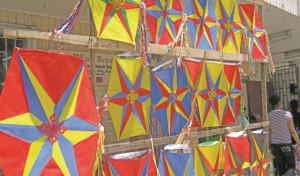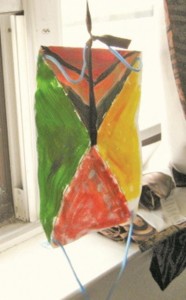It is believed that the art of kite-flying originated in China before 1,000 B.C. Researchers speculate that kite-flying may have been introduced to Guyana by Chinese indentured immigrants in the mid-19th century.
The kite is a vehicle for creativity. Apart from religious symbolism, the kite is linked to essential aspects of science, technology, engineering and math. Kite making also encourages concentration, mathematical and geometric precision.
Many families today forego investing time and effort into making kites, instead purchasing imported plastic kites or locally made ones, ignoring the fact that kite-making serves as an opportunity for children to have fun and be creative.

Those who can recall the “caddy-ole-punch”, for instance, know the feeling of accomplishment as children when they saw their creation soaring in the sky. Although making this kite did not require alot, it encouraged children to be artistic and inventive in assembling it.
Some older folks could recall dominant styles of local kites that existed in British Guiana, but are somewhat non-existent today. These were the star-shaped kite, the box kite, the girl kite, and the fighting kite.
The star-shaped kite, also known as ‘star point’ in Guyana, is constructed with two frames crossed in an X, one horizontal frame across the middle, and a third and shortest frame extended from the middle to a curved piece of bamboo between the top ends of the two vertically crossed frames. Using flour paste or ‘gyamma cherry’ a green berry filled with a glue-like substance colourful paper is pasted on to the frame forming a star.
The box kite’s typical design has four parallel struts or support sides. The box is made rigid with diagonal crossed struts. There are two sails, or ribbons, with the width about a quarter of the length of the box. The ribbons wrap around the ends of the box, leaving the ends and middle of the kite open. In flight, one strut is the bottom, and the bridle is tied between the top and bottom of this strut. The dihedral or upward angle of the sails helps stability. This kite encouraged skills in aviation, construction and precision. Its beauty comes from the effect of sunlight illuminating its colourful cellophane paper walls.
Kites themselves were divided into male and female styles; the male carried a nose-bridge with a thin ‘bull’: a rounded piece of paper on the taut string behind, and which made the kite sing, while the female was a flat kite, with no bull, but with bushy colourful frills, flown at a short distance. The ‘girl kite’ does not have a nose bridge and an exposed bull, so it does not sing.




